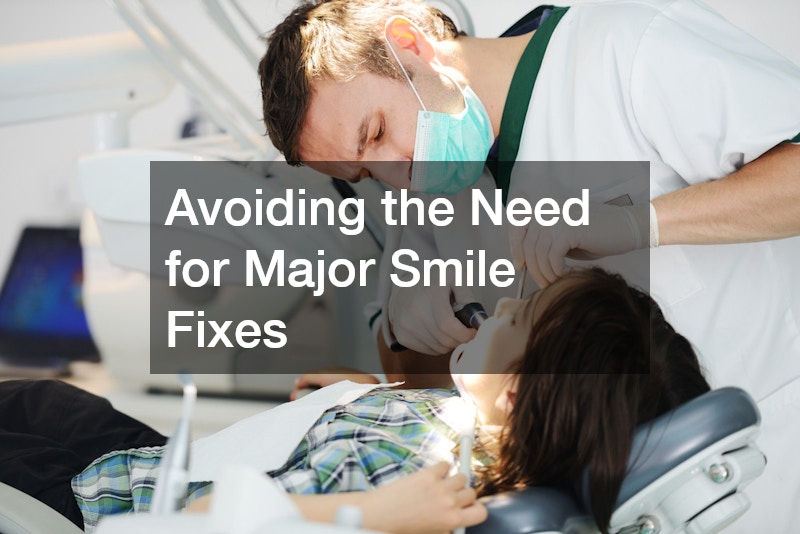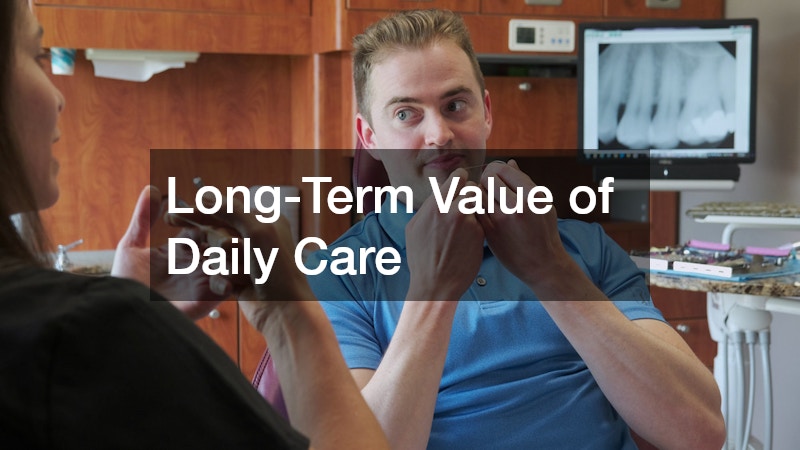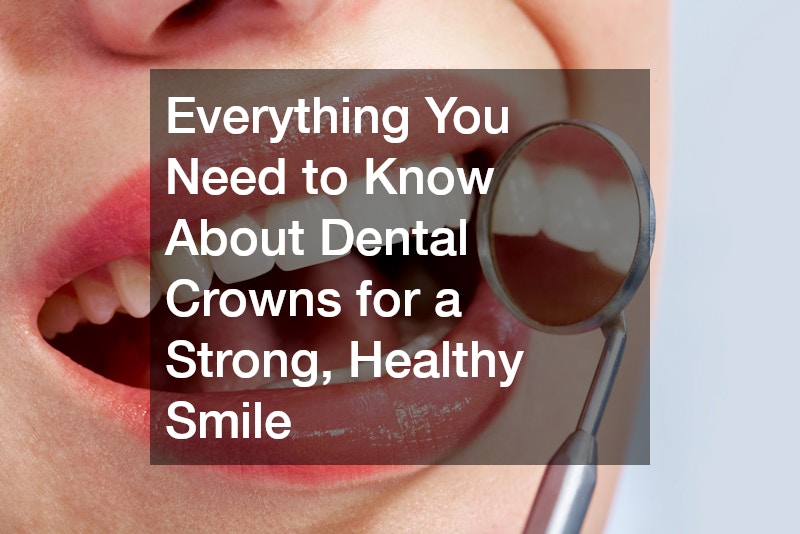
Dental health is often an overlooked but vital aspect of overall well-being. With the rising costs of restorative procedures and the challenges associated with dental issues, understanding the difference between preventative and restorative practices can lead to more informed choices. Early visits to the dentist and a commitment to preventive care have the potential to save on future expenses and enhance one’s quality of life significantly. Neglecting dental checkups often results in complications that require extensive treatments, making the comparison of preventative vs restorative care crucial for dental care.
Preventative care involves regular checkups, cleanings, and education about maintaining good oral hygiene habits, while restorative care focuses on addressing problems that have already developed, such as cavities or gum disease. By prioritizing dentists’ appointments and adhering to a preventative care routine, individuals can enjoy healthier teeth and gums over the long term. This article dives deep into the various aspects of preventative vs restorative practices, conveying why it’s essential to make early visits to the dentist a priority.
In the following sections, we will touch upon various themes that highlight the benefits of preventative dental care. From creating a welcoming dental office environment to establishing small habits that prevent costly emergencies, we will explore the intricacies of dental health. Ultimately, understanding preventative vs restorative measures serves as a guide for better dental health care strategies.

Why Early Visits Make All the Difference
Early visits to the dentist play a critical role in maintaining oral health. Dentists recommend that individuals start regular checkups as soon as their first tooth emerges or by their first birthday. By establishing a routine of dental visits early on, patients can nip potential issues in the bud, reducing the chances of needing extensive restorative procedures later on.
Preventative measures such as fluoride treatments and sealants can be applied during early dental visits to safeguard against decay. Furthermore, educating parents about their child’s dental health can foster good habits, leading to a lifetime of better oral health. These proactive steps illustrate how preventative vs restorative approaches not only enhance health but also lead to significant cost savings.
When patients settle into a routine of visiting the dental office regularly, they become accustomed to the process and are encouraged to continue caring for their teeth at home. Skipping appointments can lead to small issues becoming larger, more complex problems that require costly restorative solutions. Hence, reinforcing the importance of early visits sets a solid foundation for effective preventative care.
How the Right Environment Encourages Consistency
A welcoming and comfortable dental office plays a significant role in promoting consistent visits. When patients feel at ease in their dental environment, they are more likely to maintain regular checkups and follow recommended care practices. Creating a child-friendly space can also alleviate anxiety associated with dental visits, encouraging families to make preventative care a priority.
Moreover, the atmosphere of a dental office can enhance the overall patient experience. Many dental services now include amenities such as calming music, relaxing scents, or even virtual reality distractions to ease anxiety. These comforting elements support the philosophy of preventative vs restorative, as they underscore the importance of ongoing care rather than waiting for issues to emerge.
Additionally, a knowledgeable and friendly staff contributes significantly to a positive dental experience. Whether it’s the greetings at the front desk or the explanations provided by the dental team, building rapport helps patients feel valued and heard. Ultimately, an encouraging environment that promotes consistent visits leads to better oral health outcomes.
Small Habits That Prevent Big Costs
Adopting small, positive habits in daily oral care can help prevent larger issues down the line. Brushing twice a day, flossing regularly, and minimizing sugary snacks can significantly reduce the risk of cavities and gum disease. By implementing these small practices, individuals can avoid the need for costly dental services associated with restorative care.
Even dietary choices play a vital role in maintaining tooth and gum health. Foods rich in calcium, such as dairy products, and those containing antioxidants, like fruits and vegetables, contribute positively to overall dental health. Effective education about these small changes significantly impacts the preventative vs restorative balance, leaning towards a healthier future.
Staying informed about one’s dental health can empower patients to make better decisions regarding their care. Regular checkups and cleanings with dentists, combined with good home care create a network of protection, helping to detect possible issues early. Consequently, these small habits equate to greater financial savings and improved long-term health.

Avoiding the Need for Major Smile Fixes
Cosmetic dental care provides numerous options for patients who want to improve their smiles, but it can be costly and time-consuming. One of the best ways to avoid needing major smile fixes is through preventative care. Using regular checkups and cleanings to maintain good oral health can prevent conditions that might later necessitate more comprehensive and expensive cosmetic treatments.
Simple interventions, like routine fluoride applications or sealants, can protect teeth from decay before significant damage occurs. Additionally, regular dental cleanings reduce plaque and tartar buildup, which are common culprits of eventual cosmetic problems. When discussing preventative vs restorative strategies, maintaining routine care ensures that your smile remains intact without the need for drastic cosmetic measures later.
Implementing a preventative approach not only saves money but also keeps patients confident smiling. The psychological benefits of a healthy, stunning smile promote a positive self-image that transcends beautifully maintained teeth. Ultimately, investing time in preventative care today can translate to fewer procedures and better aesthetics tomorrow.
Stopping Gum Issues Before They Start
Periodontal treatment involves addressing gum issues that can lead to severe consequences if left untreated. Regular visits to the dentist can help identify early signs of gum disease, such as gingivitis, which is easier to treat when caught early. Preventative care focused on maintaining healthy gums helps to avoid the need for extensive periodontal treatments down the line.
When dentists evaluate gum health during routine checkups, they can inform patients about how their home care might need improvement. An emphasis on brushing, flossing, and avoiding tobacco products can mitigate gum disease risks. This preventive mindset stands in stark contrast to restorative efforts where gum treatment becomes critical following the manifestation of advanced periodontal issues.
Having regular periodontal checkups leads to a comprehensive understanding of one’s gum health, helping patients maintain their smiles for years to come. Consistent care builds a solid foundation against potential gum problems, reinforcing the superiority of preventative vs restorative care strategies. Recognizing the importance of healthy gums is essential in achieving optimal dental health.
How to Keep Replacement Procedures Off Your Calendar
The prospect of needing a tooth implant can be daunting for many patients, both emotionally and financially. Preventative care acts as a safeguard against tooth loss due to decay or damage, reducing the likelihood of needing such invasive measures. Regular dental checkups and cleanings establish ongoing relationships with dentists, paving the way for the early detection of issues.
By embracing preventative strategies like fluoride treatments and dental sealants, patients can significantly decrease their risk of decay. Dentists can also suggest specific treatments tailored to a patient’s individual needs, allowing patients to take actionable steps to protect their teeth. Understanding preventative vs restorative strategies underscores that safeguarding your teeth through consistent care is a far more favorable approach than managing repair costs later.
Most importantly, maintaining a healthy smile can contribute significantly to overall wellbeing and self-esteem. Preventative measures encourage individuals to value their dental health, emphasizing that taking care of teeth today can eliminate the stress of dental replacements tomorrow. Through proper maintenance and care, patients can enjoy a lifetime of strong, healthy teeth.

What Skipping Checkups Really Leads To
Neglecting regular checkups can have serious repercussions, often leading to the need for more extensive and expensive dental restoration procedures. While patients may feel fine for a while, underlying issues such as cavities or gum disease may be silently progressing. This highlights the preventive vs restorative debate where skipping visits places individuals at risk for significant dental complications.
Regular visits to the dentist allow for early diagnosis of issues and immediate intervention, preventing future pain and costs. By regularly monitoring oral health, dentists can provide personalized solutions that align with an individual’s specific dental care needs. When patients opt for preventative care over restorative measures, they equip themselves with knowledge, resources, and peace of mind.
The costs associated with restorative care can be substantial, extending beyond the financial realm to include impacts on overall quality of life. Missing checkups often leads to situations where patients find themselves in pain, requiring emergency dental services to address manageable issues that became severe. Adopting a preventative mindset empowers patients to take charge of their oral health and avoid these unfortunate circumstances.
Catching Issues Before They Become Serious
One of the significant advantages of preventative care is the opportunity to catch dental issues before they escalate into more severe problems. Periodontists and general dentists alike encourage regular checkups for this very reason; what may seem like a tiny cavity or mild gum inflammation can quickly escalate without intervention. It’s also during these visits that dentists can provide tailored advice, ensuring proper care, which further solidifies the preventative vs restorative conversation.
The best solutions typically come from proactive approaches to dental health—considering an issue at its earliest stages allows for simple treatments rather than complex surgeries. Maintenance through checkups results in fewer emergency visits and less invasive treatments, contributing to a more positive dental experience overall. Furthermore, early detection empowers individuals to maintain their dental health with knowledge at their fingertips.
Empowering patients through education and engagement aids in managing their oral health effectively. Emphasizing the importance of early detection within the context of preventative care makes a compelling case against waiting for an issue to worsen. Continuous monitoring encourages a holistic approach to wellbeing, showcasing the long-term benefits of choosing preventative over restorative care.
Straightening Smiles Without the Stress Later
Invisible tooth alignment methods have gained popularity, particularly as they offer a more discreet alternative to traditional braces. These treatments not only work to enhance smiles but also can prevent further dental problems associated with misalignment. When individuals adopt preventative strategies like regular consultations, they can identify whether invisible alignment is a suitable choice for their dental health.
Choosing preventative care can lead to discovering problems before they escalate. If left untreated, misaligned teeth can lead to uneven wear, gum recession, or even tooth loss—conditions that require restorative care. This creates an interesting dialogue around preventative vs restorative practices, illustrating that taking the time to consider alignment early can lead to long-lasting stability.
Regular assessments by dental professionals help ensure that anyone considering tooth alignment has a personalized plan that incorporates their unique needs. This holistic approach aids in preventing future issues and sustaining dental health, highlighting the benefits of small, consistent steps in care. Ultimately, taking the preventive path can yield optimal results without the stress of later restorative fixes.

Long-Term Value of Daily Care
Daily oral dental health care can yield impressive long-term benefits when consistently practiced. Simple yet effective habits like diligent brushing, flossing, and routine dental visits create a resilient foundation for oral health. As patients embrace methods rooted in preventative care, they benefit from healthier gums and teeth, which can prevent the need for expensive restorative options.
From a financial perspective, the cumulative costs associated with neglecting dental health often dwarf the investments made in preventative care. Regular checkups and cleanings, combined with a structured at-home regimen, build a safety net that protects against costly interventions. Deliberately choosing preventative measures lays the groundwork for healthier, happier futures, steering patients towards a path away from restorative measures.
Moreover, fostering strong oral hygiene habits from an early age can instill these values in future generations. Children who witness their parents prioritizing dental health are more likely to mimic those behaviors. By reinforcing the importance of preventative vs restorative strategies, individuals can contribute positively to the broader narrative of oral health care.
The value of preventative dental health care, care cannot be overstated. Prioritizing early visits, establishing small but significant habits, and creating welcoming dental office environments all foster an atmosphere where oral health flourishes. By understanding the contrasting approaches of preventative vs restorative care, individuals can make informed decisions about their dental health that promote longevity and overall well-being.
Investing in preventative care today results in fewer costly procedures tomorrow and significantly enhances one’s quality of life. Embracing small habits, seeking regular checkups, and maintaining an open dialogue with dental professionals create a sustainable plan for ongoing health. Ultimately, the power lies in choices; by choosing preventative strategies diligently, patients strengthen their oral health for a lifetime.


